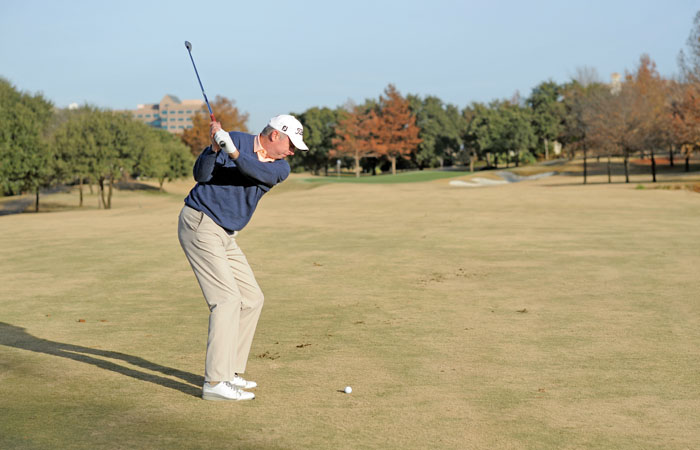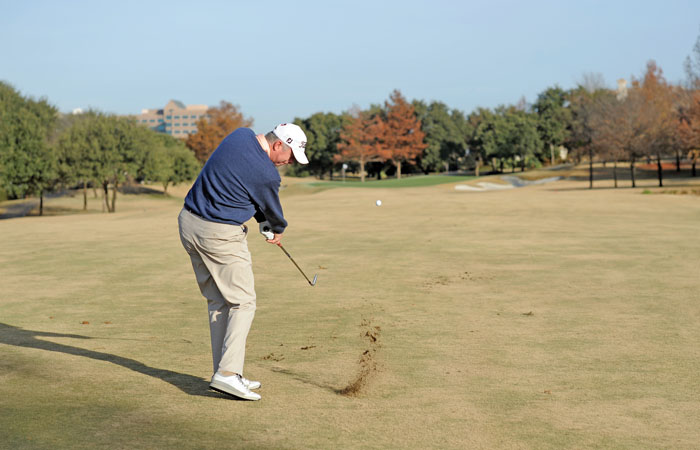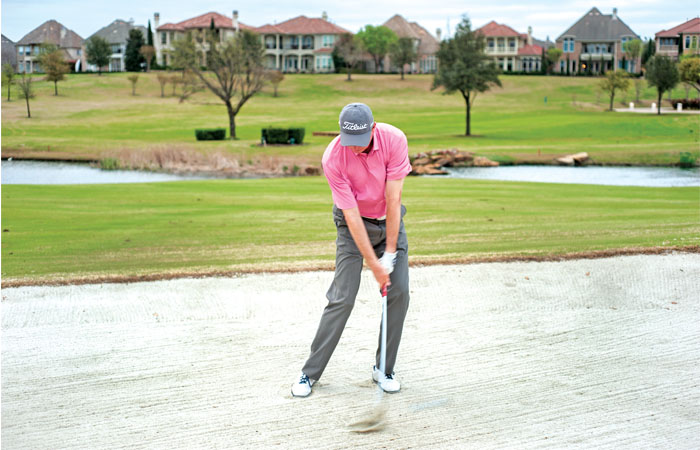Here’s a breakdown of the basics to help you improve your chipping:
1. Grip and Stance
Use your putting grip
Stance: Set up with your feet close together, about hip-width apart. Lean slightly toward the ball with your weight shifted to your front foot (about 60-70 percent of your weight). Keep your knees slightly flexed and your posture relaxed.
Ball Position: Slightly back in your stance, closer to your trail foot. This helps create a clean strike with more control over the shot.
2. Club Selection
The choice of club will depend on the distance to the hole, the type of lie you have, and the surface you’re chipping from (e.g., rough, fairway or fringe). Common clubs for chipping include:
Pitching Wedge (PW): For short chips and higher trajectories.
Gap Wedge (GW): A versatile option for medium-range chips.
Sand Wedge (SW): Used for a bit more loft and softer landings.
9-Iron or 8-Iron: For lower, more controlled chips when you need less loft and a bump-and-run type of shot.
3. The Chipping Swing
Hands Ahead: Set up with your grip slightly in front of the ball toward your lead hip. From here, make your putting stroke back and through
Keep It Simple: Focus on a simple rocking of the shoulders rather than using your hands. The hands should be quiet, with the body doing most of the movement.
Flamingo Drill
For this drill, place your trail foot straight back in a line even with your lead foot, ensuring all your weight is on your lead side. This drill ensures your upper body stays connected and all of your weight stays on your lead side through impact.

Railroad Drill
Place two alignment sticks parallel to your target aimed at your target. From here, keep your clubhead inside the alignment sticks as you hit shots.

Towel Under Armpits Drill
Place a long towel under your armpits and hit chip shots. The towel ensures your chest and arms stay connected and you rotate your upper body through the shot.
